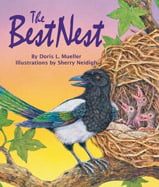Alignment to Standards for DC

| Grade | Number | Standard |
|---|---|---|
| 1 | SC.1.2.1. | Recognize and explain that water, rocks, soil, and living organisms are found on the Earths surface. |
| 1 | SC.1.4. | Different types of plants and animals inhabit the Earth. |
| 1 | SC.1.4.2. | there can be differences, such as size or markings, among the individuals within one particular plant or animal group (e.g., maple trees, zebras). Variation is a normal characteristic of many kinds of living things. |
| 1 | SC.1.4.5. | Identify the external features that local plants and animals have (such as those found in schoolyards or in city neighborhoods) that enable them to survive in their environment. |
| 2 | SC.2.6. | Plants and animals have structures that serve different functions in growth, survival, and reproduction. |
| 2 | SC.2.6.1. | visible, external features of plants and animals and describe how these features help them live in different environments. |
| 2 | SC.2.7. | Living things depend on one another and their environment for survival. |
| 2 | SC.2.7.1. | Observe and describe how animals may use plants, or even other animals, for shelter and nesting. |
| 2 | SC.2.7.4. | materials in nature, such as grass, twigs, sticks, and leaves, can be recycled and used again, sometimes in different forms, as birds do in making their nests. |
| 2 | SC.2.7.6. | animals and plants sometimes cause changes in their surroundings, some of these changes are easy to see, some are very small and hard to recognize, even though they can be very important. |
| 2 | SC.2.8. | Many different types of plants and animals inhabit the Earth. |
| 2 | SC.2.8.1. | living things are found almost everywhere in the world in habitats such as the oceans, rivers, rain forests, mountain ranges, arctic tundra, farms, cities, and other environments. Recognize that some habitats are extreme, such a |
| 2 | SC.2.9.2. | Explain that humans, like all living things, reproduce offspring of their own kind. |
| 2 | SC.2.9.3. | Observe that and describe how offspring are very much, but never exactly, like their parents and like other offspring of the same parents. |
| 3 | SC.3.5. | Plants/animals classified by the physical characteristics that they share. |
| 3 | SC.3.5.1. | living things can be sorted into groups in many ways using various properties, such as how they look, where they live, and how they act, in order to decide which things belong to which group. |
| 3 | SC.3.6. | Plants and animals have predictable life cycles. |
| 3 | SC.3.6.1. | Recognize that plants and animals go through predictable life cycles that include birth, growth, development, reproduction, and death. |
| 3 | SC.3.6.2. | Describe the life cycle of some living things, such as the frog and butterfly, including how they go through striking changes of body shape and function as they go through metamorphosis. |
| 3 | SC.3.6.3. | Compare and contrast how life cycles vary for different living things. |
| 4 | SC.4.7.1. | Explain that organisms interact with one another in various ways, such as providing food, pollination, and seed dispersal. |
| 4 | SC.4.7.7. | Explain how in all environments, organisms grow, die, and decay, as new organisms are produced by the older ones. |
| 5 | SC.5.8. | Many characteristics of an organism are inherited from the parents, but others result from the influence of the environment. |
| 5 | SC.5.8.2. | List some characteristics of plants and animals that are fully inherited (e.g., form of flower, shape of leaves) and others that are affected by the climate or environmental conditions (e.g., browning of leaves from too much sun, language spoken). |
| 5 | SC.5.9. | Adaptations in physical structure or behavior may improve an organismês chance for survival. |
| 5 | SC.5.9.3. | Explain how organisms can cause changes in their environment to ensure survival, and how these changes may affect the ecosystem (the living and nonliving components of the environment). |
| 5 | SC.5.9.5. | changes in an organismês habitat are sometimes beneficial and sometimes harmful, and how changes in the environment (drought, cold) have caused some plants and animals to die, migrate, or become extinct. |
| 5 | SC.5.9.7. | Recognize that some behaviors are instinctive (turtles burying their eggs) and others learned (wolfês hunting skills). |